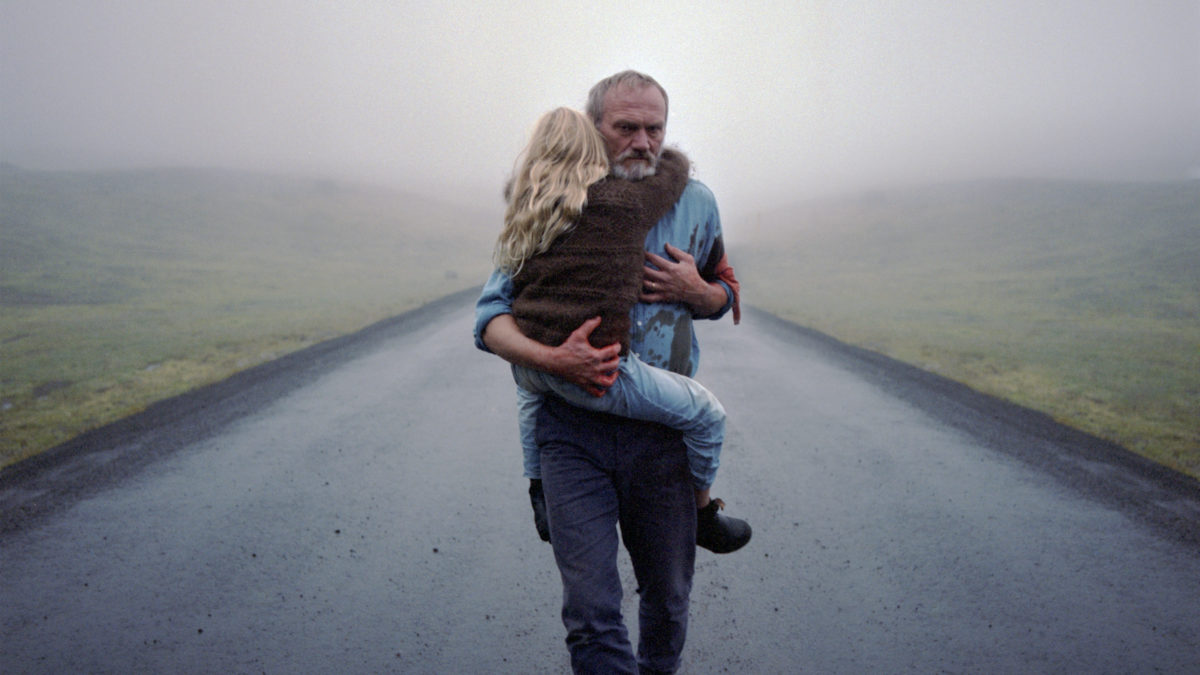Early in Icelandic director Hlynur Pálmason’s second feature, A White, White Day, there’s a sequence in which the sterile sight of an overwhelmingly Nordic minimalist house is shown traversing time. As the colors of its surroundings shift quickly like in a hokey calendar montage in an American Rom-Com, the building remains unchanged in its monolithic presence, foreshadowing the film’s exploration of the effects (or lack thereof) of stasis.
Ingimundur (Ingvar Eggert Sigurðsson), a widowed retired police officer, is subdued by the aforementioned condition’s progressively asphyxiating grip; his gestures appear to be limited to expressions of either icy stoicism or subdued grumpiness. A whiter-than-white Ikea cowboy, he doesn’t look even a bit shaken by the recent death of his wife of many years, but once he begins to posthumously discover the extent of her clumsily covered-up infidelity, the unforeseen magnitude of his furious machismo start to shutter his mundane life.
Shot on 35mm Kodak stock, A White, White Day manages to convey Ingimundur’s psychological downward spiral through a determined use of formalist mannerisms and humorously dry set-ups. The former often consist of creeping dolly-ins towards the symmetrical framing or snappy editing ludically projecting the free-association puzzle that is his mind. The latter portray Ingimundur’s fall in surreal segments like a kid show’s protagonist live existential meltdown. And yet, once the old man’s Eastwoodian retaliation is set loose, the movie’s purposes become muddled amidst his frenzied man-rage. At the end, it seems like Pálmason aims for a kind of deconstruction of male emotional stubbornness, however, his antiseptic formal rigueur seems as restrictive as the main character’s reluctance to open up.
